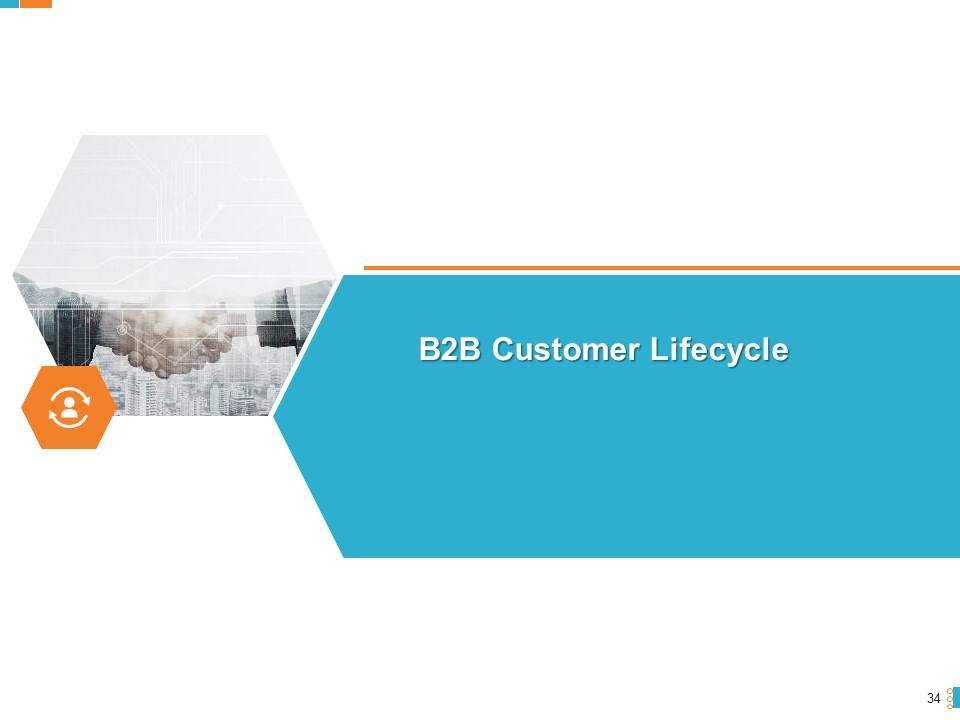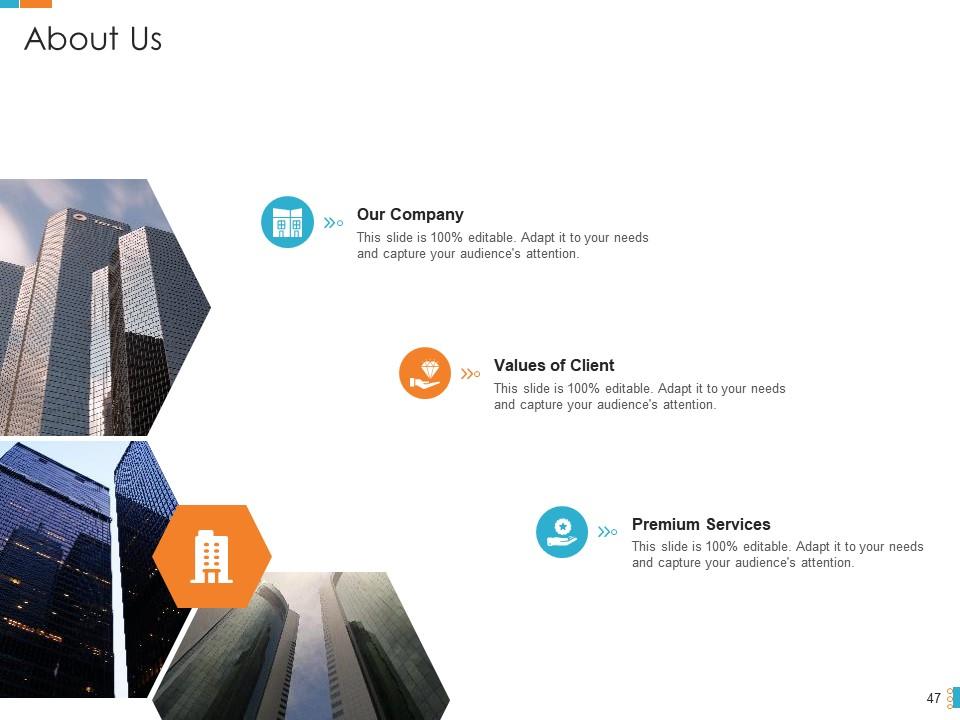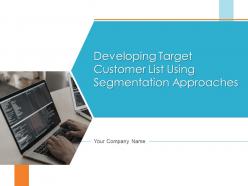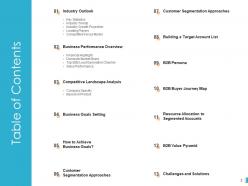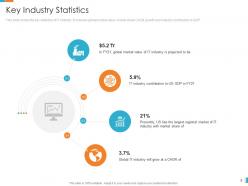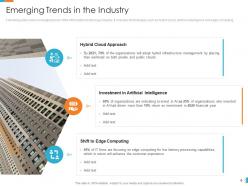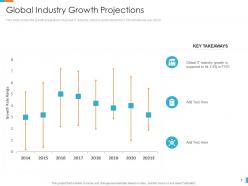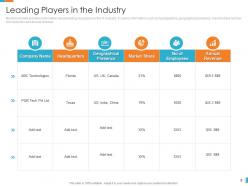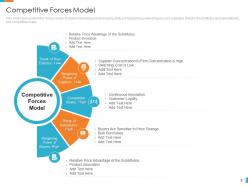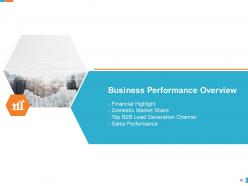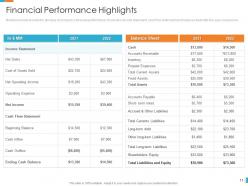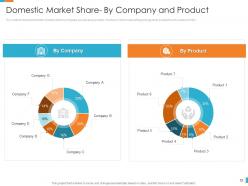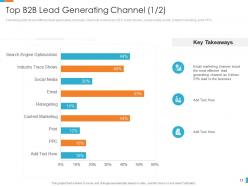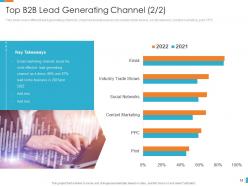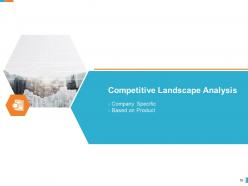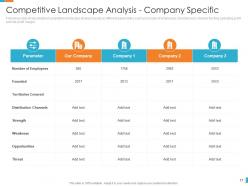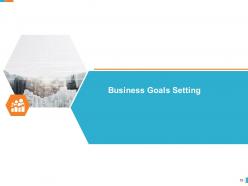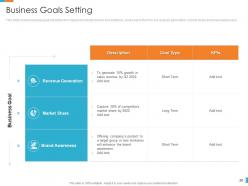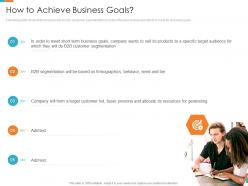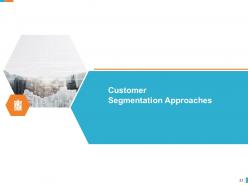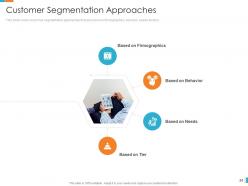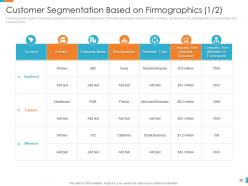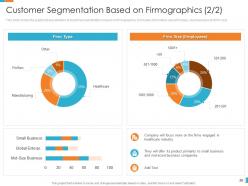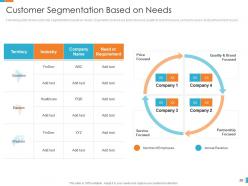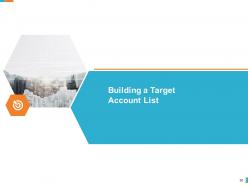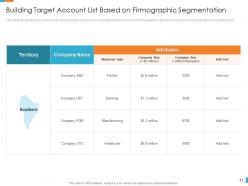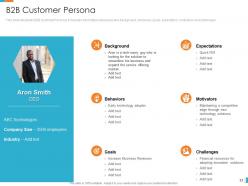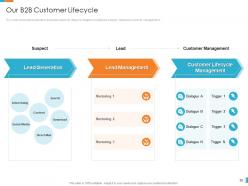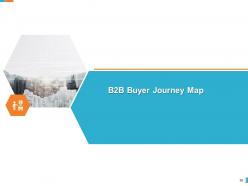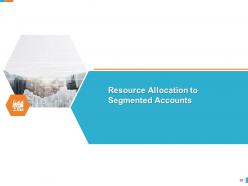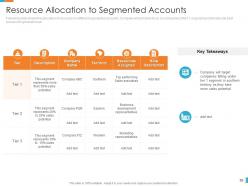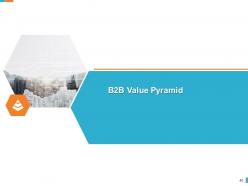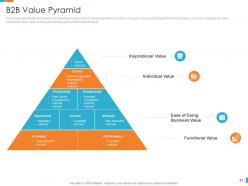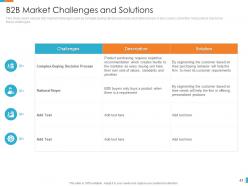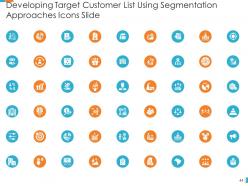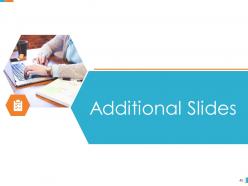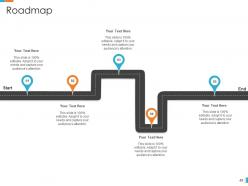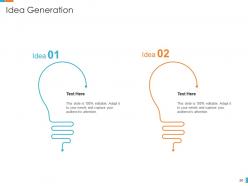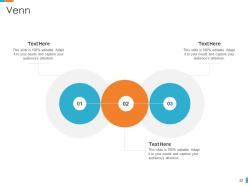Developing target customer list using segmentation approaches powerpoint presentation slides
Our Developing Target Customer List Using Segmentation Approaches Powerpoint Presentation Slides are topically designed to provide an attractive backdrop to any subject. Use them to look like a presentation pro.
You must be logged in to download this presentation.
 Impress your
Impress your audience
Editable
of Time
PowerPoint presentation slides
This complete deck covers various topics and highlights important concepts. It has PPT slides which cater to your business needs. This complete deck presentation emphasizes Developing Target Customer List Using Segmentation Approaches Powerpoint Presentation Slides and has templates with professional background images and relevant content. This deck consists of total of fifty four slides. Our designers have created customizable templates, keeping your convenience in mind. You can edit the colour, text and font size with ease. Not just this, you can also add or delete the content if needed. Get access to this fully editable complete presentation by clicking the download button below.
People who downloaded this PowerPoint presentation also viewed the following :
Content of this Powerpoint Presentation
Slide 1: This title slide introduces the Developing Target Customer List Using Segmentation Approaches. Add the name of your company here.
Slide 2: This is the Agenda slide of Developing Target Customer List Using Segmentation Approaches.
Slide 3: It contains the Table of Contents. It includes - Business Performance Overview, Competitive Landscape Analysis, Industry Outlook, etc.
Slide 4: This is a table of content slide showing the Industry Outlook.
Slide 5: This slide shows the key statistics of the IT industry. It includes the global market value, market share CAGR growth, and industry contribution to GDP.
Slide 6: This slide presents the Emerging Trends in the Industry. It covers emerging trends in the information technology industry. It includes technologies such as hybrid cloud, artificial intelligence, and edge computing.
Slide 7: This slide presents the Global Industry Growth Projections. It shows the growth projections of the global IT industry, which is estimated to hit 3.5% in the financial year 2020.
Slide 8: This slide presents the Leading Players in the Industry. It covers information such as headquarters, geographical presence, market share number of employees, and annual revenue.
Slide 9: This slide presents the Competitive Forces Model. It covers porter's five forces model.
Slide 10: This is a table of content slide showing the Business Performance Overview
Slide 11: This slide presents the Financial Performance Highlights. It includes an income statement, cash flow statement, and balance sheet with a two-year comparison.
Slide 12: This slide presents the Domestic Market Share- By Company and Product. It shows the domestic market share by the company as well as a by-product.
Slide 13: This slide presents the Top B2B Lead Generating Channel (1/2). It shows different lead-generating channels.
Slide 14: This slide presents the Top B2B Lead Generating Channel (2/2). It covers different lead-generating channels. Channels included are email, industry trade shows, social networks, content marketing, print, PPC.
Slide 15: This slide presents the Sales Performance – Yearly and Quarterly. It illustrates the sales performance of the firm both yearly as well as quarterly.
Slide 16: This is a table of content slide showing the Competitive Landscape Analysis.
Slide 17: This slide presents the Competitive Landscape Analysis - Company Specific. It shows a detailed competitive landscape analysis based on different parameters such as the number of employees, founded year, investor funding operating profit, and net profit margin.
Slide 18: This slide presents the Competitive Landscape Analysis – Based on Product. Attributes covered are market awareness, product quality, customer experience.
Slide 19: This is a table of content slide showing the Business Goals Setting.
Slide 20: This slide presents the Business Goals Setting. Goals set by the firm are revenue generation, market share, and brand awareness.
Slide 21: This is a table of content slide showing the How to Achieve Business Goals?
Slide 22: This slide presents How to Achieve Business Goals? It shows that the company will do b2b customer segmentation in order to offer personalized products to meet its business goals.
Slide 23: This is a table of content slide showing Customer Segmentation Approaches.
Slide 24: This slide presents the Customer Segmentation Approaches. It covers customer segmentation approaches that are based on firmographics, behavior, needs, and tier.
Slide 25: This slide presents the Customer Segmentation Based on Firmographics (1/2). It includes information about the territory, industry, company name, headquarters, business type, and company size.
Slide 26: This slide presents the Customer Segmentation Based on Firmographics (2/2). It includes information about the firm type, business type, and firm size.
Slide 27: This slide presents the Customer Segmentation Based on Behavior. Behavior segments covered are industry served, the technology used, frequency of usage, and buying segment.
Slide 28: This slide presents the Customer Segmentation Based on Needs. The segments covered are price-focused, quality & brand-focused, service-focused, and partnership-focused.
Slide 29: This slide presents the Tier Based Customer Segmentation. Companies having annual revenue of more than 10 million dollars and employee size of more than 5000 fall under the tier 1 segment.
Slide 30: This is a table of content slide showing Building a Target Account List.
Slide 31: This slide presents the Building Target Account List Based on Firmographic Segmentation. It illustrates that the company will build its target customer list and segment them based on firmographics.
Slide 32: This is a table of content slide showing the B2B Persona.
Slide 33: This slide presents the B2B Customer Persona. It includes information about persona background, behaviors, goals, expectations, motivators, and challenges.
Slide 34: This is a table of content slide showing the B2B Customer Lifecycle.
Slide 35: This slide presents the Our B2B Customer Lifecycle. It illustrates business to the business customer lifecycle. The stages included are suspect, lead, and customer management.
Slide 36: This is a table of content slide showing the B2B Buyer Journey Map.
Slide 37: This slide presents the B2B Buyer Journey Map. It starts with the trigger stage and ends with the renewal stage. There are six stages covered in this map along with various goals and touchpoint information.
Slide 38: This is a table of content slide showing the Resource Allocation to Segmented Accounts.
Slide 39: This slide presents the Resource Allocation to Segmented Accounts. The company will primarily focus on companies of tier 1 segment and will allocate the best resource to generate lead.
Slide 40: This is a table of content slide showing the B2B Value Pyramid.
Slide 41: This slide presents the B2B Value Pyramid. The representative can pitch the company’s product along with the following values such as inspirational value, individual value, ease of doing business value, and functional value.
Slide 42: This is a table of content slide showing the Challenges and Solutions.
Slide 43: This slide presents the B2B Market Challenges and Solutions. It covers various b2b market challenges such as complex buying decision processes and rational buyers.
Slide 44: Developing Target Customer List Using Segmentation Approaches Icons Slide/
Slide 45: This slide presents the Additional Slides.
Slide 46: This slide provides the Mission for the entire company. This includes the vision, the mission, and the goal.
Slide 47: This slide contains the information about the company aka the ‘About Us’ section. This includes the Value Clients, the Target Audience, and Preferred by Many.
Slide 48: This slide shows the members of the company team with their name, designation, and photo.
Slide 49: This slide is a Roadmap template to showcase the stages of a project, for example.
Slide 50: This slide is the Idea Generation slide. It is used to brainstorm ideas for a project.
Slide 51: This is the Puzzle slide.
Slide 52: This slide provides a Venn diagram that can be used to show interconnectedness and overlap between various departments, projects, etc.
Slide 53: This slide contains Post It Notes that can be used to express any brief thoughts or ideas.
Slide 54: This is a Thank You slide where details such as the address, contact number, email address are added.
Developing target customer list using segmentation approaches powerpoint presentation slides with all 54 slides:
Use our Developing Target Customer List Using Segmentation Approaches Powerpoint Presentation Slides to effectively help you save your valuable time. They are readymade to fit into any presentation structure.
-
Understandable and informative presentation.
-
Unique design & color.
-
Very well designed and informative templates.




































